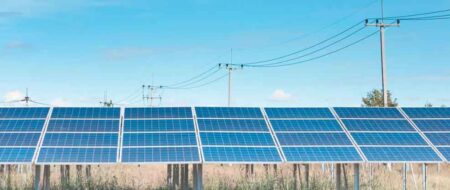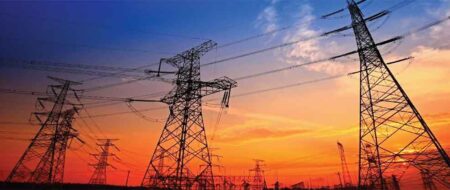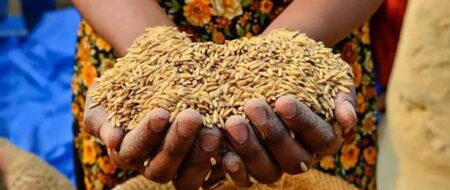Pakistan’s Current Account Deficit: Tackling the Sustainability Issue
Does the current account deficit represent a risk to our economic well-being in the near term or in the longer term? To answer this question, it is needed to identify the underlying causes.
Abstract
[The magnitude of the recent increases in the current account deficit (CAD), both in relation to GDP as well as in absolute dollar size, has raised considerable concern. There is nothing inherently bad about CAD, however, the concern about the deficit centers on a specific issue: Does the current account deficit represent a risk to our economic well-being in the near term or in the longer term? To answer this question, it is needed to need to identify the underlying causes of the deficit. What developments during the past two or three years in the domestic economy and in the world have led us to purchase dramatically more goods and services from abroad? Furthermore, can the
Introduction
The current account (CA) balance is a key indicator of the strength of an economy’s fundamentals. Fluctuations in this variable are deeply intertwined and convey
A long-term review of the current account may require looking at structural features of the economy, such as levels of economic development, demographic profiles and structures of consumption and production. These factors have a role in determining the savings rate and, hence, the current account balance. As countries move to the next stage of development, they typically import capital and, therefore, run current account deficits.
In the 1990s,
Like most transitional economies,
The current growth momentum is based upon demand for durables, mostly imported, and expansion in the financial and the telecom sectors. These were, collectively, important drivers of inflows and thus the current account deficit.
Inflationary pressures furthered the depreciation of the rupee that jeopardized ineffectiveness of demand management policies in
Earlier,
The case of
The recent deterioration of the current account is multifaceted and has been caused by both domestic and external factors. On the domestic side, five years of strong economic growth, strengthening of the domestic demand, and the consequent pickup in investment spending have led to a massive surge in imports. The problem of rising imports is further aggravated by the unprecedented rise in oil prices in the international market. An unexpected rise in commodity prices in recent years has also contributed to the surge in the import bill.
On the external front, the global economy continued its strong and broad-based expansion, with growth reaching close to 5 percent. This helped
CAD remained supportive in the initial phase of recovery; however, with a marked slowdown in exports in FY04, it started to deteriorate. It maintained a surplus of 2 percent of GDP during the period FY00–FY02. However, despite relatively high
Of course, the worsening of the CA deficit would have not been possible without proper financing arrangements. The orthodox financing arrangements were not properly managed to make the financing of the current account sustainable. The non-structural inflows, defined as potentially non-repeating flows that are not principally driven by developments in the economy, slowed drastically after FY04, widening the current account deficit. These inflows included the Saudi oil facility and receipts for logistic support provided to Coalition Forces operating in
Greater reliance on foreign savings and a current account deficit to finance domestic investment leads to greater accumulation of external debt. The tremendous rise in the accumulation of external debt during the last one and a half year (FY07 and FY08) bears great similarity to what happened in
As happened in most developing countries in recent years, the deficit came as a consequence of large inflows of easy foreign capital. In the case of
The current account deficit continued to widen with even more vigor. Unfortunately, official circles had no Plan B for the eventuality that inflows might suddenly stop or be reduced to a minimal level. When inflows became inadequate in the first three quarters of the current fiscal year (FY08), there was excessive borrowing from SBP and a massive rise in external borrowing, which complicated the already difficult task of monetary management. The massive influx of non-debt-creating inflows had provided much needed exchange rate stability to the economy in the past. However, the abrupt fall in these inflows not only put pressure on the debt stock but also fuelled the free fall of the rupee against all major currencies. This implies that preventing or limiting foreign capital inflows could prove to be a costly policy vendetta to reduce the CA deficit in terms of economic growth.
In the last quarter of FY08, prospects for the current account or fiscal account deficits were not very good; even the private sector was not generating enough surpluses to provide ample support. Higher energy costs, falling purchasing power of consumers, social unrest, an unexpectedly high price level, poor governance, massive corruption and, above all, lack of an enabling environment pose serious threats to the hard-earned macroeconomic stability of the country. In this situation, the question of sustainability of the current account becomes very important and especially warrants serious policy attention.
The Question of Sustainability
The sustainability of the current account deficit is frequently analyzed in terms of sustainability of external debt. Two years ago, the sustainability of
Notably, during the last few years, there has been an unprecedented rise in capital inflows in developing countries, sparking an academic debate throughout the developing world about the judiciousness of relying on this trend. A cautious approach was advocated towards external inflows on account of their potential to disrupt an otherwise smooth balance of payments. However, this concern was not evident in
Studying the dynamics of twin deficits, Dudley and McKelvey (2004) maintain that the two are intertwined. Chronic budget deficits create a shortfall of domestic savings. This leads to higher interest rates, a stronger local currency, and foreign capital inflows. In this way, the initial budget deficit becomes transformed into twin budget and trade deficits.
In Pakistan, the tolerance for higher fiscal deficits that began in FY05 and attained new heights in FY08 has led to the situation where the expansionary fiscal policy is more than neutralizing the highly positive impact of a tight monetary policy. Persistent upward adjustments of interest rates by SBP since April 2005 proved to be counterproductive and private sector investment in the productive sectors shrank considerably, with serious implications for job creation. The competitiveness of the manufacturing sector went down and the agriculture sectors faced severe shortages of affordable credit disbursement.
Freund (2000) and Mann (1999) concluded from their studies of the experiences of other industrial countries that pressure for correction often arises when external deficits are in the range of 4 to 5 percent of GDP. Experiences reviewed by Freund (2000) suggest that growth does slow in most countries undergoing external adjustment and exchange rate depreciation. However, these experiences reflect a range of policies interacting with a range of economic and financial conditions. In FY08,
A very interesting feature about Pakistan is that its current account is driven either by a slowdown in exports growth or a rise in GDP growth (Figure 2). Normally, higher export growth is the ultimate result of higher economic growth because a growing economy generates an exportable surplus in normal conditions. However, Pakistan’s consumers prefer imported items whenever their incomes are rising, leading to the unique phenomenon that increase in GDP growth and deceleration of exports go side by side in the country’s economy.
This implies that GDP growth originates from the services sector rather than the production sector. There was a structural imbalance between the growth of tradable and non-tradable goods and services.
Another relatively qualitative measure of CAD sustainability concerns external competitiveness, which plays a major role in determining whether a country’s assets are dearer to the outside world or the deficit is driven by a consumption bonanza. One of the indicators frequently used by economists and researchers to identify an increase or decrease in the competitiveness of the economy is the terms of trade index.
Milesi-Ferretti and Razin (1996) define a CAD as sustainable if it is not going to provoke any drastic policy shift. This is not likely to happen as long as a country’s inter-temporal solvency is not violated. In addition, a country’s willingness to repay debts and foreign investors’ willingness to lend must not be jeopardized. Milesi-Ferretti and Razin provide a very useful theoretical framework. Unfortunately, lack of data and the complicated task of structuring the future [N2] prevented the use of its principal solvency equations. Nevertheless, the unsustainability of
Economic theory suggests that large external capital inflows have the potential to cause real exchange rate appreciation. This is an inherent risk in overdependence on external inflows to finance the current account deficit, which policymakers have to manage. Appreciation in the real exchange rate could cause a loss of competitiveness and further structural worsening of the trade balance, which, in most developing economies like
After [N5] the re-emergence of a trade deficit-driven current account deficit since FY04, the appreciation of the real exchange rate has consistently driven trade deficits and current account deficits in Pakistan. These periods of appreciating real exchange rate coincide with periods of massive external capital inflows into the
Since September 2007, the REER started depreciating as the nominal exchange rate started losing ground against major currencies. With the start of the last quarter of FY08, the nominal exchange rate started free-falling. The REER followed suit. One positive aspect of the depreciation of the rupee may be an increase in the competitiveness of
Conventionally, it is expected that a current account deficit resulting from low domestic savings is likely to be more unsustainable than one resulting from high investment. Obviously, high investment has the potential of increasing production capacity and, thus, future output and trade surpluses.
Review of the Current Account Balance
Table 1 shows that
The growth of exports slowed significantly in FY07 but picked up in FY08, offsetting a significant decline in import growth during FY07 in response to a deceleration in credit to the private sector, or monetary tightening. SBP was able to shave off some demand for imports but, certainly, at a cost. However, imports growth bounced back amidst rising commodity and oil prices in FY08 and the differential between imports growth and exports growth widened significantly. The current account deficit reached 5.2 percent of GDP (US$7.5 billion) in FY07, one percentage point higher than in FY06. It had already reached 7.6 percent of GDP during July-May of FY08. The irony was that no effective policy response came from official circles.
|
Table-1: Summary Balance of Payments |
||||||
|
|
|
|
|
(Million $ ) |
||
|
ITEM |
FY03 |
FY04 |
FY05 |
FY06 |
FY07 |
FY08p |
|
Current account balance |
4070 |
1811 |
-1534 |
-4990 |
-6878 |
-14016 |
|
Current account balance without off. transfers |
3165 |
1300 |
-1784 |
-5696 |
-7403 |
-14443 |
|
Goods: Exports f.o.b |
10974 |
12459 |
14482 |
16553 |
17278 |
20125 |
|
Goods: Imports f.o.b |
11333 |
13738 |
18996 |
24994 |
26989 |
35411 |
|
Trade Balance |
-359 |
-1279 |
-4514 |
-8441 |
-9711 |
-15286 |
|
Services (Net) |
-2 |
-1316 |
-3293 |
-4430 |
-4170 |
-6302 |
|
Services: Credit |
2712 |
2644 |
3319 |
3769 |
4140 |
3590 |
|
Services: Debit |
2714 |
3960 |
6612 |
8199 |
8310 |
9892 |
|
Income (Net) |
-2211 |
-2207 |
-2386 |
-2667 |
-3582 |
-3905 |
|
Income: Credit |
170 |
187 |
437 |
784 |
940 |
1613 |
|
Income: Debit |
2381 |
2394 |
2823 |
3451 |
4522 |
5518 |
|
Of which :Interest Payments |
1277 |
1057 |
1037 |
1248 |
1417 |
2156 |
|
Balance on Gds & Serv. & Inc |
-2572 |
-4802 |
-10193 |
-15538 |
-17463 |
-25493 |
|
Current Transfer (Net) |
6642 |
6613 |
8659 |
10548 |
10585 |
11477 |
|
Capital Account and Financial Account |
661 |
-1252 |
1131 |
6071 |
10449 |
8778 |
|
Capital Account, |
1133 |
82 |
685 |
241 |
304 |
69 |
|
Financial Account |
-472 |
-1334 |
446 |
5830 |
10145 |
8709 |
|
Dir. Invest. In Rep. Econ. |
798 |
951 |
1525 |
3521 |
5140 |
5153 |
|
Other Investment Assets |
449 |
-669 |
-1352 |
148 |
-585 |
397 |
|
Other Investment Liab. |
-1453 |
-1885 |
-281 |
1246 |
2421 |
3198 |
|
Monetary Authorities |
-51 |
2 |
-5 |
0 |
-1 |
490 |
|
General Government |
-1419 |
-1792 |
574 |
769 |
1308 |
2315 |
|
Disbursements |
1389 |
978 |
2163 |
2238 |
2669 |
3485 |
|
Amortization |
2788 |
2744 |
1558 |
1446 |
1339 |
1149 |
|
Overall Balance |
5254 |
781 |
-410 |
1334 |
3730 |
-5780 |
|
Reserves and Related Items |
-5254 |
-781 |
410 |
-1334 |
-3730 |
5780 |
|
SBP Reserves( Excl. CRR & Sinking Fund) |
9529 |
10564 |
9805 |
10765 |
13345 |
8577 |
Policies to shave off aggregate demand from the economy may not hurt higher living standards and may also not necessarily lower a CAD. For the last two years,
One of the manifestations of the conflict in monetary tightening and fiscal expansion is that the CAD reached 7.6 percent of GDP or US$13.0 billion in the first eleven months of the current fiscal year (July-May FY08). The increase in CAD has given rise to suspicions about a sharp contraction of economic growth, consumption and, consequently, imports, coupled with major depreciation in the exchange rate against the currencies of main trading partners. The Pakistani rupee has already depreciated by 7.0 percent, moving from Rs.60.5 per dollar in July 2007 to Rs.68.8 per dollar in May 2008. SBP has taken some measures to bridle the rupee’s free float against the dollar but has only succeeded in reducing the velocity of depreciation. The government has thwarted all measures to bring foreign inflows for maintaining exchange rate stability in the country.
Exports: Deceleration in exports growth is very crucial because it is a manifestation of the poor sequencing of reforms and failure of targeted policies. In recent years, the composition of imports underwent substantial changes while the structure of exports remains more or less the same. All claims of export diversification proved to be mere rhetoric; exports remained narrowly based in terms of both products and destinations[N6] .
The share of the textile sector in overall exports has declined in the post-quota liberalization period by almost 5 percentage points and the share of other items has gone up by more or less the same amount. Over the years, the textile sector has been nurtured by undue official patronage leading to poor industrial base in the country. The sector has been heavily subsidized and lacks competitiveness. The government allowed tremendous concessional financing facilities to it but it proved to be a disaster, and most of the investment was done in the spinning sub-sector, which was less export-intensive.
|
Table-2: Structure of Exports |
|||||||||
|
|
FY 00 |
FY 01 |
FY 02 |
FY 03 |
FY 04 |
FY 05 |
FY 06 |
FY 07 |
FY08* |
|
Food Group |
9.4 |
8.6 |
8.6 |
10.6 |
10.0 |
8.6 |
9.4 |
9.3 |
14.0 |
|
Textile Group |
65.6 |
64.1 |
63.5 |
65.2 |
65.7 |
59.4 |
60.2 |
60.9 |
55.8 |
|
Other Manufactures Group |
13.7 |
15.1 |
18.8 |
16.7 |
15.7 |
17.7 |
16.4 |
14.3 |
18.9 |
|
All Other Items |
11.3 |
12.2 |
9.1 |
7.5 |
8.6 |
14.3 |
14.0 |
15.5 |
11.3 |
|
Total |
100 |
100 |
100 |
100 |
100 |
100 |
100 |
100 |
100 |
|
* July-May Source: Federal Bureau of Statistics |
|||||||||
During the first eleven months of FY08 (July–May), exports growth was driven completely by non-conventional, non-textile products. However, export of technology-based products was still almost non-existent. Exported products ranged from crude items like sports goods and clinical and surgical items to some negligible software exports. A value added or knowledge-based component was largely missing.
Another failure of
Imports: Importantly, in order to reduce the trade deficit and still accelerate economic growth, it is not necessary to restrain imports—this could adversely affect domestic production as well as growth in exports. Hence, the import of necessary inputs for production should continue to be encouraged, and exports will simultaneously be expanded. More than three-fifths of
|
Table-3: Structure of Imports |
|||||||||
|
|
FY00 |
FY01 |
FY02 |
FY03 |
FY04 |
FY05 |
FY06 |
FY07 |
FY08* |
|
Machinery Group |
14.5 |
15.0 |
16.9 |
18.2 |
21.2 |
21.8 |
21.4 |
15.5 |
14.5 |
|
Petroleum Group |
27.2 |
31.3 |
27.1 |
25.1 |
20.3 |
19.4 |
23.4 |
24.0 |
28.1 |
|
Raw Materials |
14.0 |
12.9 |
14.5 |
13.9 |
14.2 |
15.8 |
16.2 |
10.3 |
8.1 |
|
Food Group |
10.8 |
9.2 |
8.0 |
8.0 |
6.6 |
6.8 |
7.2 |
6.2 |
10.8 |
|
Consumer Durables |
4.9 |
4.2 |
4.4 |
5.9 |
5.8 |
6.9 |
7.7 |
6.7 |
7.2 |
|
Others |
28.7 |
27.3 |
29.1 |
28.9 |
31.8 |
29.2 |
24.1 |
37.2 |
31.3 |
|
Total |
100.0 |
100.0 |
100.0 |
100.0 |
100.0 |
100.0 |
100.0 |
100.0 |
100.0 |
|
* July-May Source: Federal Bureau of Statistics. |
|||||||||
Like exports, Pakistan’s imports are also highly concentrated in a few items, namely, machinery, petroleum and petroleum products, chemicals, transport equipments, edible oil, iron and steel, fertilizer and tea. These eight categories of imports accounted for 85 percent of total imports during the first eleven months (July–May) of FY08.
The composition of
During the first eleven months of FY08, imports grew by 29.6 percent to $35.9 billion with an extraordinary surge in the import of petroleum products as well as imports of the food group and raw material. Non-oil imports were up by 22.4 percent and non-oil and non-food imports surged by 18.5 percent during the same period. Imports of the food group were up by 51.3 percent in the current fiscal year, mainly on account of unanticipated imports of wheat, amounting to $860 million, and an extraordinary surge (71.5 percent) in the imports of edible oil due to the sky-rocketing price of palm oil in the international market. Imports of food group accounted for 11 percent of total imports but contributed 16.0 percent in the overall growth of imports in the current fiscal year[N10] .
Imports of machinery posted a modest increase of 11.0 percent in the first eleven months of FY08, reaching $5.2 billion. Within the machinery group, imports of power generating machines, construction and mining machines, and other machinery showed a substantial increase of 38.2 percent, 33.1 percent and 9.9 percent, respectively. The rise in the import of these different categories of machines is attributed to ongoing work on various power and construction projects in the country. The machinery group accounts for 14.5 percent of total imports but contributed only 6.3 percent in the overall import growth of this year.
Table-4: Major Contributors to Increase in Imports
|
|
July-May |
% Change |
Absolute Increase |
Point Cont. in Import Growth |
% Cont of absolute increase in imports |
|
|
FY07 |
FY08 |
|||||
|
Total imports |
27743.2 |
35943.3 |
29.6 |
8200.1 |
29.6 |
29.6 |
|
Food Group |
2556.5 |
3867.5 |
51.3 |
1311.0 |
4.7 |
16.0 |
|
Machinery Group |
4697.3 |
5213.1 |
11.0 |
515.9 |
1.9 |
6.3 |
|
Transport Group |
931.3 |
870.1 |
-6.6 |
-61.2 |
-0.2 |
-0.7 |
|
Petroleum Group |
6632.0 |
10094.2 |
52.2 |
3462.2 |
12.5 |
42.2 |
|
Textile Group |
1389.8 |
2206.1 |
58.7 |
816.2 |
2.9 |
10.0 |
|
Agri Chemicals Group |
3956.5 |
5259.7 |
32.9 |
1303.2 |
4.7 |
15.9 |
|
Consumer Duables |
2685.5 |
2581.1 |
3.9 |
-104.5 |
-0.4 |
-1.3 |
|
Electric Mach & App. |
594.3 |
676.4 |
13.8 |
82.1 |
0.3 |
1.0 |
|
Road motor Vehicles |
1288.8 |
1207.3 |
-6.3 |
-81.5 |
-0.3 |
-1.0 |
|
Mobile Phones |
802.4 |
697.4 |
-13.1 |
105.0 |
-0.4 |
-1.3 |
|
Raw Materials |
2749.8 |
2927.7 |
6.5 |
177.9 |
0.6 |
2.2 |
|
Others |
2144.5 |
2923.8 |
36.3 |
779.3 |
2.8 |
9.5 |
Imports of the petroleum group witnessed an extraordinary surge of 52.2 percent, amounting to $10.1 billion. The petroleum group accounts for 28.1 percent of total imports but contributed 42.2 percent in the overall import growth for the year. The surge in imports of petroleum group has been the result of an extraordinary increase in the prices of Petroleum, Oil and Lubricants’ (
Unlike previous years, imports of consumer durables registered a decline of 3.9 percent in the first eleven months of FY08. The share of consumer durables in total imports stood at 7.2 while its contribution to import growth has been negative 1.3 percent.
Imports of raw material, accounting for 8.1 percent of total imports, grew by 6.5 percent in the first eleven months of FY08. Fertilizers, plastic material, iron, steel and scrap, accounting for 45 percent of total raw material imports, grew respectively by 193.1 percent, 12.3 percent and 74 percent. The extraordinary increase in the import of fertilizer was surprising at a time when the price of fertilizer in the international market was up by almost 50 percent. As against 1.2 million tons last year,
Unlike the trend in the recent past, imports of telecom remained more or less at last year’s level of $2.1 billion, suggesting that the expansion phase of various cellular companies has saturated for the time being. Imports of telecom accounts for 5.9 percent of total imports but contributed only marginally (0.3 percent) to this year’s overall imports growth.
It is important to note that the surge in imports during 2003–06 had been driven by strong economic growth which strengthened the domestic demand and increased investment. In contrast, the surge in this year’s import is not due to any structural shift in demand but because of rising international commodity prices, such as crude oil and palm oil, and one-off increases in the import of wheat and fertilizer. Imports of petroleum products and edible oil alone contributed 47 percent to the rise of this year’s import. An additional 18.7 percent contribution came from the import of wheat and fertilizer. Together, these four items accounted for two-thirds of growth in this year’s imports.
Services Trade: Imbalances on services trade have grown at a much faster pace than imbalances on merchandize trade during the last four years. Liberalization in the areas of major services during the last eight years may be the main culprit. The main drivers are transportation and travel services, insurance and freight payments and more travel expenses by Pakistanis to travel abroad. This is a new phenomenon in
Income Account: On the income account [N11] side, the balance was almost stagnant in absolute terms but declined in relation to GDP in the six out of eight years since FY00. However, in the last three fiscal years (FY06–FY08), the deficit, even in relative terms, was explosive. The amount includes mainly income from investment, both in the form of direct portfolio or other investment, income being generated in non-conventional means or profits and dividends on investments. The outflow on account of direct investment or equity increased from $1.2 billion in FY04 to $2.8 billion in FY07, while outflow on account of portfolio investment increased from $0.2 billion to $0.6 billion in the same period. The outflow on account of income on equity has already touched $2.3 billion in Jul–Mar FY08. The deficit on the income account increased from $2.2 billion in FY04 to $3.6 billion in FY07. Among the implications of the way the financing of the current account was arranged in the most recent past will be rising interest payments and remittance of profits and dividends by investors in
Current Transfers: The deterioration in the current account deficit in the last three years mainly emanated from the sharply rising trade deficit, along with increase in net outflows from the services and income account. The strong growth in current transfers[N12] , caused by impressive growth in remittances, almost entirely offset the deficit in the services and income account, leaving the trade deficit as the fundamental source of expansion in the current account deficit. Current transfers witnessed an impressive increase of 16.4 percent during Jul–April FY08 due to strong growth in private transfers. Notwithstanding this surge in recent years, the quantum of current transfers fluctuated in the $8–10 billion range. Worker’s remittances have depicted a high double-digit growth but official transfers fluctuated a great deal.
The future sustainability of the current account deficit hinges on the implications of financing items. The foreign exchange gap was filled by foreign financial resources during the last eight years, including both debt-creating and non-debt-creating flows. The composition of capital flows has changed significantly over the years. Dependence on aid has almost vanished; foreign direct investment, foreign portfolio inflows, external borrowing on commercial terms, mostly from multilateral agencies like World Bank and Asian Development Bank (ADB), and workers’ remittances have accounted for the lion’s share in foreign exchange inflows. The proportion of non-debt-creating flows has gone up substantially.
|
Table-5: Pakistan’s Balance of Payments |
||||||||||||
|
(Million US Dollars) |
||||||||||||
|
I T E M |
FY05 |
FY06 |
FY07 |
FY08 (Jul-Mar) |
||||||||
|
Credit |
Debit |
Net Credit |
Credit |
Debit |
Net Credit |
Credit |
Debit |
Net Credit |
Credit |
Debit |
Net Credit |
|
|
|
|
|
|
|
|
|
|
|
|
|
|
|
|
1.Current Account |
27,006 |
28,540 |
-1,534 |
31,761 |
36,751 |
-4,990 |
32,772 |
39,866 |
-7,094 |
26,835 |
36,601 |
-9,766 |
|
A. Goods and services |
17,801 |
25,608 |
-7,807 |
20,322 |
33,193 |
-12,871 |
21,202 |
35,289 |
-14,087 |
16,584 |
32,509 |
-15,925 |
|
a. Goods |
14,482 |
18,996 |
-4,514 |
16,553 |
24,994 |
-8,441 |
17,080 |
27,024 |
-9,944 |
14,156 |
25,312 |
-11,156 |
|
1. General merchandise |
14,401 |
18,753 |
-4,352 |
16,388 |
24,624 |
-8,236 |
16,924 |
26,652 |
-9,728 |
14,000 |
25,016 |
-11,016 |
|
b. Services |
3,319 |
6,612 |
-3,293 |
3,769 |
8,199 |
-4,430 |
4,122 |
8,265 |
-4,143 |
2,428 |
7,197 |
-4,769 |
|
1. Transportation |
1,062 |
2,280 |
-1,218 |
1,080 |
2,863 |
-1,783 |
1,092 |
3,135 |
-2,043 |
751 |
2,590 |
-1,839 |
|
1.1 Freight |
112 |
1,617 |
-1,505 |
124 |
2,083 |
-1,959 |
157 |
2,225 |
-2,068 |
124 |
2,066 |
-1,942 |
|
2. Travel |
177 |
1,172 |
-995 |
216 |
1,411 |
-1,195 |
275 |
1,625 |
-1,350 |
205 |
1,191 |
-986 |
|
3. Other Services |
2,080 |
3,160 |
-1,080 |
2,473 |
3,925 |
-1,452 |
2,755 |
3,505 |
-750 |
1,472 |
3,416 |
-1,944 |
|
B. Income |
437 |
2,823 |
-2,386 |
784 |
3,451 |
-2,667 |
934 |
4,503 |
-3,569 |
1,316 |
3,991 |
-2,675 |
|
1. Compensation of employees |
2 |
1 |
1 |
6 |
1 |
5 |
7 |
– |
7 |
6 |
0 |
6 |
|
2. Investment income |
435 |
2,822 |
-2,387 |
778 |
3,450 |
-2,672 |
927 |
4,503 |
-3,576 |
1,310 |
3,991 |
-2,681 |
|
2.1 Direct investment |
18 |
1,640 |
-1,622 |
39 |
2,115 |
-2,076 |
31 |
2,837 |
-2,806 |
42 |
2,272 |
-2,230 |
|
2.1.1 Income on equity |
18 |
1,640 |
-1,622 |
39 |
2,115 |
-2,076 |
31 |
2,837 |
-2,806 |
42 |
2,272 |
-2,230 |
|
C. Current transfers |
8,768 |
109 |
8,659 |
10,655 |
107 |
10,548 |
10,636 |
74 |
10,562 |
8,935 |
101 |
8,834 |
|
1. General government |
266 |
16 |
250 |
715 |
34 |
681 |
528 |
24 |
504 |
542 |
37 |
505 |
|
2. Other sectors |
8,502 |
93 |
8,409 |
9,940 |
73 |
9,867 |
10,108 |
50 |
10,058 |
8,393 |
64 |
8,329 |
|
2.Capital & Financial Account |
5,890 |
4,294 |
1,596 |
8,486 |
3,694 |
4,792 |
13,085 |
6,476 |
6,609 |
11,352 |
2,393 |
8,959 |
|
A. Capital account |
693 |
8 |
685 |
250 |
9 |
241 |
340 |
5 |
335 |
37 |
|
31 |
|
B. Financial account |
5,197 |
4,286 |
911 |
8,236 |
3,685 |
4,551 |
12,745 |
6,471 |
6,274 |
11,315 |
2,387 |
8,928 |
|
Source: SBP |
||||||||||||
However, the surge in external capital inflows has not been matched by a commensurate rise in the absorptive capacity of the economy. The principal reason is the persistent deterioration in the competitiveness in the industrial sector of
In the one and a half year from July 2006 to March 2008, most of the net inflows of foreign capital into Pakistan have been in the form of debt to be repaid by future generations. The country has added almost $9 billion to its external debt stock in this relatively short period. Not only has this mounting indebtedness increased the stock of income-producing capital [N13] but the country’s spendthrift bureaucracy, with the collusion of corrupt, establishment-hatched politicians, has entirely wasted this massive inflow. It may be said that the capital was shortsightedly and irresponsibly spent in an orgy of unbridled consumption.
The accretion of foreign exchange reserves was given undue importance over the last eight years. Most of the inflows were added to the foreign exchange reserves of the SBP. The capital inflows intermediated through commercial banks resulted in credit expansion which, instead of stimulating investment, triggered a consumption boom with a strong import bias in the country during FY02–FY06. SBP had tried to manage commercial banks’ intermediation at low level but even though it has helped in tremendous rise in imports or higher production of consumer durables. SBP had done proper sterilization of the inflows to check unplanned expansion of money supply. It never seemed successful for keeping M2 growth below nominal GDP growth for the last four years. However, the resultant monetary overhangs are adding to the inflation miseries of the population at large.
With US$15 billion in foreign exchange reserves (FER) and a current account deficit of $7 billion in FY07,
Macroeconomic Perspective
In the macroeconomic perspective, a current account deficit may refer to excess of gross investment over national savings (comprised of public, corporate and household savings). A current account deficit thus reflects the inadequacy of a country’s national savings to finance its investment needs and that country’s need to resort to the savings of foreigners. Capital-starved countries like
The investment level tells little about the adequacy of incomes or the productivity of spending on non-tradables compared to spending on tradables. The current account deficit is determined through developments in business saving, government saving, investment, exports, imports, and a host of other factors. All these variables are endogenous according to standard macroeconomic theory. This means that their values are simultaneously determined by more fundamental considerations. A high saving rate cannot cause a low investment rate or a low CAD. Instead, the levels of investment and saving depend diversely on the underlying causative factors, such as preferences, new technologies, taxes, government spending and regulatory environment, and terms of trade. As a result, any observed correlation might be positive, negative, or zero depending on the nature of the dominant joint causes during the observation period. This might explain the growth and investment nexus in
As Figure 7 s[N15] hows, the recent deterioration of Pakistan’s current account has largely been the result of a decline in national savings, in particular, the public and household component of national savings. A simple implication of this trend is that an improvement in
As can be seen in Figure 7, since FY04, the increase in the current account deficit has reflected mostly a decline in both public and private sector saving because of the growing fiscal deficit and a further decline in already low household savings rates. Private investment, despite its welcome pickup since FY00, remains below its levels in the mid-1980s. The surplus of private savings over private investment has been shrinking for the last four years starting from FY 04 to FY 07 [N16] and this is the period during which the CAD has grown. FY08 has been an exceptional year but the deterioration of the current account deficit was equally supported by deterioration in both public and private saving-investment gaps. The public savings-investment deficit has also started worsening in this period and the collective deterioration has contributed collectively to widening of the CAD. The expansionary fiscal policy is the main culprit. Reckless public investment has not yielded dividends; it has worsened the external debt burden[N17] .
It is an undisputed fact that the larger part of government spending in Pakistan is wasteful. The poor quality of government expenditure is not necessarily wasteful from the point of view of politicians, who are spending money to attract votes or considering only the point of view of the beneficiaries of the expenditure. Owing to lack of fiscal discipline and accountability, the ruling elite enjoy substantial discretionary powers and the favored constituencies are protected. When the government is spending without serious examination of overall value-for-money considerations, it is to be expected that the scale of the waste would be of economy-wide significance.
There is also much — well-justified — disquiet about the quality of the government’s regulations and institutions. [N18] No significant productivity gains from recent increases in social sector and development expenditures are observed, which are mainly funded by foreign borrowings. The costs and delays in getting infrastructure projects under way are a pervasive concern. The widespread acknowledgement of the poor quality of the regulatory mechanism, even in official circles, has led to a weakening of the investment, growth and employment nexus [N19] in
More than 80 percent of FDI inflows are in four sectors of the economy, namely, power, telecommunications, oil and gas, and financial businesses. Since none of these sectors is employment-intensive, the contribution to growth has been jobless and joyless. The remittance of profits and dividends in these sectors is enormous and prompt. This is visible from the massive growth of remittance of profits and dividends during FY07. The trend is likely to persist in the years to come and thus likely to cause great problems for exchange rate stability and sustainability of the current account deficit.
Sustainability Outlook
The current account deficit, in its present shape, is unsustainable by all standards. Even without the aid of sophisticated econometric models, it is possible to assess that the prevalent practices do not augur well for CAD sustainability. The following indications support this conclusion:
v The increasing external debt-to-GDP ratio is an indication of unsustainability. This implies that a current account balance that leads to increasing external liabilities is an indication of un-sustainability of the deficit.[N21] In Pakistan’s case, until now, the current account deficit has not provoked an increase in the external debt-to-GDP ratio. However, Pakistan was hardly able to maintain this ratio during July 2007-March 2008. This ratio is likely to explode [N22] by end-June 2008 [N23] and thus may break the condition of sustainability.
v According to Summers (1996), a CAD-to-GDP ratio higher than 5 percent sends a strong signal for an evaluation of sustainability and a review of strategy.
v A fall in national savings is problematic for CAD sustainability. Inasmuch as a fall in the public component of national savings is associated with a higher budget deficit, trends in the fiscal deficit become an automatic indicator of the sustainability of the CAD. In
v The current account deficit may broadly be decomposed into trade deficit and net factor income. The composition of the current account deficit is very crucial in determining its sustainability. A current account deficit may be less sustainable if it is being driven by a large trade deficit than by a large negative net factor income (Roubini and Wachtel 1998). Persistently large trade deficits are indicative of structural competitiveness problems whereas large negative factor incomes may be due to a fall out of higher external debt profile. Higher trade deficits are normally associated with countries where the trade-to-GDP ratios are low. So the size of the overall trade in relation to the GDP may be a good indicator of competitiveness but the level of the exports-to-GDP ratio is an even more accurate[N25] indicator of structural competitiveness. Furthermore, the real effective exchange rate could be used as a measure of structural competitiveness and, thus, the sustainability or otherwise of deficits.
v In the aftermath of the East Asian Currency turmoil of 1997, gross international reserves have been given much importance and regarded as an important tool in external sector stability. A higher level of foreign exchange reserves is widely used to measure the sustainability of current account deficits. A higher ratio of gross international reserves to debt stock is also regarded as indicative of sustainability of current accounts. Gross foreign exchange reserves are also regarded as a cushion for a number of weeks of imports; specifically, forex reserves in excess of 16 weeks of imports are normally considered to imply the sustainability of a current account deficit.
In the case of
v The sustainability of current account deficits is believed to be contingent upon a sound and stable domestic financial system that includes strong supervision and regulation. This has been lacking in Pakistan in recent months — during FY07 and FY08, the vigilance of the State Bank of Pakistan came under furious attack on various counts and its vulnerability was exposed more than once.
v The current account deficit is basically a financing gap and some part of it has to be filled by foreign capital inflows, which are very sensitive to the state of political stability and the predictability of economic policies. These two factors, in turn, ultimately hinge on the continuity of the system of governance and confidence of investors. Unfortunately, during FY08, Pakistan scored very poorly on creditworthiness; its credit ratings were downgraded several times. Scarcity of foreign inflows has created many problems in FY08, including monetary financing and very significant exchange rate depreciation. Massive creation of debt to finance the current account deficit has generated a future stream of payments that might create problems for current account sustainability.
v The role of debt-creating and non-debt-creating capital inflows has changed substantially during the last few years. The composition, size and direction of such inflows have become crucial. Short-term inflows are more dangerous in financing the current account deficits than long-term inflows; however, the latter may enhance current account vulnerability in the long run. These inflows are expected to have real effects as the real exchange rate would tend to appreciate and compromise the competitiveness of the economy and, consequently, re-introduce structural trade deficits, which would worsen the initial current account deficit, making it more unsustainable.
Policy Recommendations
Pakistan needs an extensive external sector adjustment in the medium term because the current high level of the current account deficit is exerting pressures on external borrowing. From July 2007 to end-March 2008, Pakistan added around $5.4 billion to its stock of external debt—the highest ever addition made in a single year. This is generating a future stream of repayments which is likely to exert tremendous pressure on the balance of payments.
The origins of the exceptional size of the current account deficit should be analyzed in more detail and it should be determined whether:
- Domestic investment is too high and/or national saving is too low;
- Total domestic spending is too high and/or total domestic income is too low; and
- Domestic spending on tradables is too high and/or domestic production of tradables is too low.
A current account deficit is a norm rather than an exception in developing countries like Pakistan. What is expected is that it be kept at a tolerable level and that it not force abrupt policy adjustments that may distort the economy’s growth momentum. The threshold level in the given structural rigidities and potential of the economy is around 4 percent of the GDP, and that too should come from rising investment rather than falling national savings. The persistence of a high current account deficit over an extended period of time has serious implications, such as haphazard fluctuations in the exchange rate; accumulation of external debt beyond a sustainable level; and development of undue concerns about the vulnerability of the economy towards external shocks. A higher external debt burden constitutes a serious constraint to development because debt repayments absorb resources that could be channeled into domestic investment and development efforts. High external debt burdens discourage foreign investment because they create a high-risk environment in which there is exchange rate depreciation, capital flight, uncertainty among potential foreign investors about the possibility of profit repatriation, and higher taxes to service debts.
Pakistan is facing a double problem of depreciation because the Pak rupee is depreciating against the US dollar and the US dollar is depreciating against major currencies. In July–March FY08, Pakistan’s external debt went up by $5.4 billion but the disbursement effect was only US$1.2 billion, while $4.2 billion was translation effect emanating from the depreciation of the dollar against major currencies like the Euro, Japanese yen and others. If Pakistan’s rupee depreciates by Rs.1, it means Rs.46 billion are added to the foreign currency payable debt in rupee terms. Pakistan has to take depreciation seriously and should diversify its currency basket by engaging in professionally executed currency hedging.
Pakistan faced all sorts of problems in FY08 owing to widening of the current account deficit beyond unsustainable limits. The country’s problem is structural in nature and rigidity of exports and imports, external debt servicing commitments, volatile external inflows and, above all, a complacent economic policy have provided very little room for its management.
Pakistan has to make arrangements for non-structural financing, like the Saudi Oil Facility, by using its leverage and importance on a sustained basis.
The structure of trade has to be reviewed in detail. The structure of imports was driven by food and petroleum in FY08, the combined impact of which was explosive growth in imports by 58 percent. Clearly, Pakistan needs to reduce its reliance on imported food and energy. The import substitution strategy of the 1960s has to be revised and a task force should be formed to look into viable options for resorting to alternative food and energy sources. The world has made much progress in identifying alternative energy resources and Pakistan is bestowed with enormous wind, solar and water energy potential. The task that awaits is the capitalization of these options. Similarly, reliance on domestically produced edible oil has to be extended and farmers should be provided incentives to diversify their low-yielding crops with cultivation of edible oilseeds. Pakistani farmers need price incentives as well as technical support, especially improved seeds, for growing alternative edible oil. The current poor management of water resources, which is causing enormous loss in potential agricultural output, is another key issue to be addressed.
Pakistan’s imports still include a large concentration of luxury items, tariffs upon which have been substantially lowered in recent years. It may be pertinent to review the tariff structure for such items, including cars and cell phones.
Exports, which are captive in terms of both regions and products, have to be diversified, and non-conventional products need to be marketed to non-conventional markets. Knowledge-based exports are crucially missing from the country’s export basket, while its neighbor, India, is earning billions of dollars through export of high-tech or knowledge-based products. Pakistan has to develop a sound production base with state-of-the-art application of technology and quality standards. To build a high-tech industrial base, trained manpower and investment in human capital are needed. Quality education and skill enhancement should be emphasized.
In addition, the traditional focus on merchandize exports needs to be broadened; there is potential to enhance foreign exchange earnings by boosting services exports. Pakistan has a comparative advantage in
The combination of these actions would narrow the country’s trade imbalance and help restore the sustainability of its current account deficit.
References
—– and Abe, K., 1999, Pakistan Economy: Past Trend, Current Situation and Future Prospects, Economic Journal of the Chiba University, Chiba, Japan.
Adedeji, O.S. (2001) “The Size and Sustainability of Nigerian Current Account Deficits” IMF Working Paper, WP/01/87.
Aghevli, B. Bijan and Mohsin S. Khan, 1976, “The Monetary Approach to the Balance of Payments Determination: An Empirical Test.” In IMF (ed.), The Monetary Approach to the Balance of Payments,
Alesina, A. and R. Perotti (1995) “The Political Economy of Budget Deficits” IMF Staff Papers 42(1), pp. 1-31.
Alexander, S. S., 1952, “The Effects of a Devaluation on a Trade Balance” International Monetary Fund, Staff Paper No.2.
Baxter, Marianne. 1995. “International Trade and Business Cycles.” In Handbook of International EconomicsVol. 3, eds. Gene M. Grossman and Kenneth Rogoff, pp. 1801–1864.Amsterdam: North-Holland.
Bhatia, S. L., 1982, “The Monetary Theory of the Balance of Payments Under Fixed Exchange Rate: An Example of
Bilquees, F., 1989, ” The Monetary Approach to the Balance of Payments: The Evidence on Reserves Flow from
Cashin, P. and C.J. McDermott (1996) “Are Australia’s Current Account Deficits Excessive?” IMF Working Paper WP/96/85.
FRBSF Working Paper 2005-03. http://www.frbsf. org/publications/economics/papers/2005/wp05-03bk.pdf
Chaudhary M. Aslam 2003, “Trade Cooperation and Economic Policy Reforms in South Asia, A Case Study of Pakistan”, Research Report, TRACE Project, EU,
Chaudhary M. Aslam and Ahmed E., 2004, Globalization: WTO, Trade and Economic Liberalisation in
Chaudhary M. Aslam and Qaisrani, A. Ashfaq, 2002, Trade Instability and Economic Growth in
Easterly, W. and K. Schmidt-Hebbel (1992) “The Macroeconomics of Public Sector Deficits: A Synthesis” WB Working Paper No. 775 (
Easterly, W. and K. Schmidt-Hebbel (1993) “Fiscal Deficits and Macroeconomic Performance in Developing Countries” World Bank Research Observer 8(2), pp. 211-237.
Erceg, Christopher J., Luca Guerrieri, and Christopher Gust. 2005. “Expansionary Fiscal Shocks and the Trade Deficit.” International Finance Discussion Paper 825, Federal Reserve Board. http://www. federalreserve.gov/pubs/ifdp/2005/825/ifdp825.pdf
Feltenstein, A. and
Ghosh, A.R and J.D. Ostry (1995) “The Current Account in Developing Countries: A Perspective from the Consumption-Smoothing Approach” The World Bank Economic Review, Vol.9. No.2:305-333.
Government of
Haque, N. and P. Montie (1991) “The Macroeconomics of Public Sector Deficits: The Case of
Harberger, A. C., 1950, “Currency Depreciation, Income, and Balance of Trade” Journal of Political Economy, Vol. 58.
International Monetary Fund, International Financial Statistics,
Kemal, A.R. (2000) “Financing Economic Development” The Pakistan Development Review 39(4, pt.1), pp. 293-311.
Khan, M. Arshad, 1996, “The Balance of Payments Dis-equliberia, Monetary Policy and its Economic Impacts.” M.Phil.Thesis, Department of Economics,
. ttp://econ. korea.ac.kr/prof/sykim/files/fiscalus9.pdf
Milesi-Ferretti, G.M and A. Razin (1996) “Current Account Sustainability”
Naqvi, S. N. Haider, 1973,” The Balance of Payments Problems in Developing Countries.” Pakistan Development Review, Vol. 12, No. 3, pp. 259-272.
Piersanti, G. (2000) “Current Account Dynamics and Expected Future Budget Deficits: Some International Evidence” Journal of International Money and Finance 19, pp. 255-271.
Robinson, J., 1937, “The Foreign Exchanges” in J. Robinson, (eds) Essays in the Theory of Employment,
Roubini, N and P, Wachtel (1998) “Current Account Sustainability in Transition Economies, NBER Working Paper No. 6468.
State Bank of
World Bank (2002a) Pakistan Development Policy Review: A New Dawn? (The World Bank, Poverty Reduction and Economic Management Sector Unit, South Asia Region). World Bank, Development Research Group,
Zaidi
[N1]In Figure 3, please correct the spelling error in the caption, replace & with “and”, replace A/c with “Account”. In caption, parenthetical
[N2]Not clear to me
[N3]In Figure 4, change “Vs” to “v.” and “A/c” to Account. Pls do the same for wherever else these abbreviations occur.
[N4]Figure 5: change & to and (in all figures), change month format to Jul 2004 and ensure consistency, change FY 00 to FY00.
[N5]Pls number the figure on the right and refer to it in the appropriate place in the text. Change US $ to US$. Subsequent figures will need to be renumbered, along with the references to them in the text.
[N6]In Table 2 and all others, pls use the format FY00 (not FY 00), left-align the source, mention units in the table caption (e.g. Table 2: Structure of Exports (% Share)”, use a space and not a hyphen between “Table” and its number.
[N7]In Figure 3, the years should ideally be expressed in the FY## format as in previous tables and in the main text.
[N8]If 60 percent of imports are from minor share countries, isn’t that pretty diverse in terms of origin?
[N9]Does this apply only to raw materials or also to machinery? Pls clarify.
[N10]Table 4 needs some editing. Pls use FY## format. Space needed between $ and Million. In import categories, change Duables to Durables, Agri Chemicals to Agri-chemicals. Pls write out sub-categories under Consumer Durables and capitalize consistently. Data font and alignment need to be checked. Heads of last 2 columns are not clear
[N11]Should a new subsection begin here?
[N12]Should this be a new subsection?
[N13]This is expressed as bad news but seems to be good news – pls clarify if needed.
[N14]Not sure if this adjective can be used for financial resources. Unless this is commonly done in economic writing, please replace with something else, like “alternative”.
[N15]Should this be Figure 7?
[N16]Pls just say “since FY##” for clarity.
[N17]Change OK?
[N18]Since this has to be a reliable factual statement, please use a more solid expression. E.g. No significant productivity gains have accrued from recent…
[N19]Has it weakened these three elements or their nexus?
[N20]Pls link the thought of this sentence with the previous one. The last sentence was optimistic – what is the warning here and what should change?
[N21]The second sentence seems to be mainly repeating the point of the first. Pls combine and contract.
[N22]What would need to happen for it to be called an explosion of the ratio?
[N23]Pls update
[N24]In which year?
[N25]Change OK?











